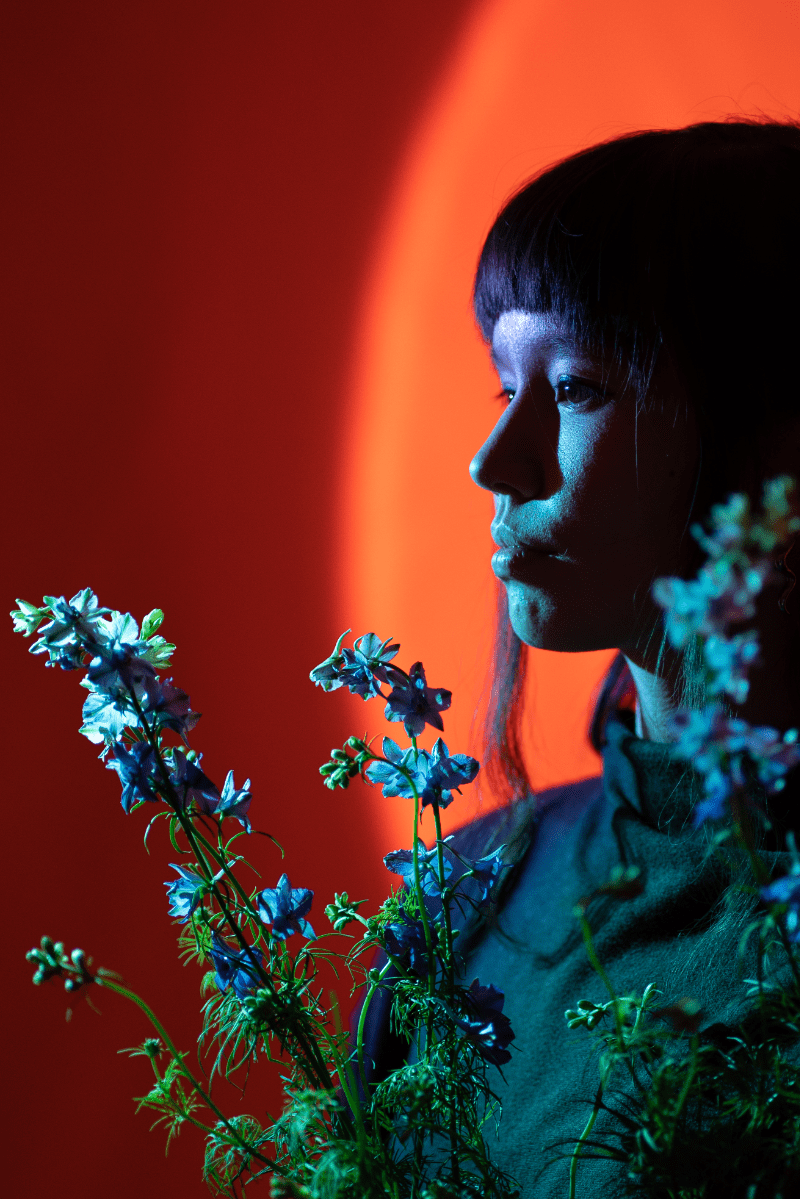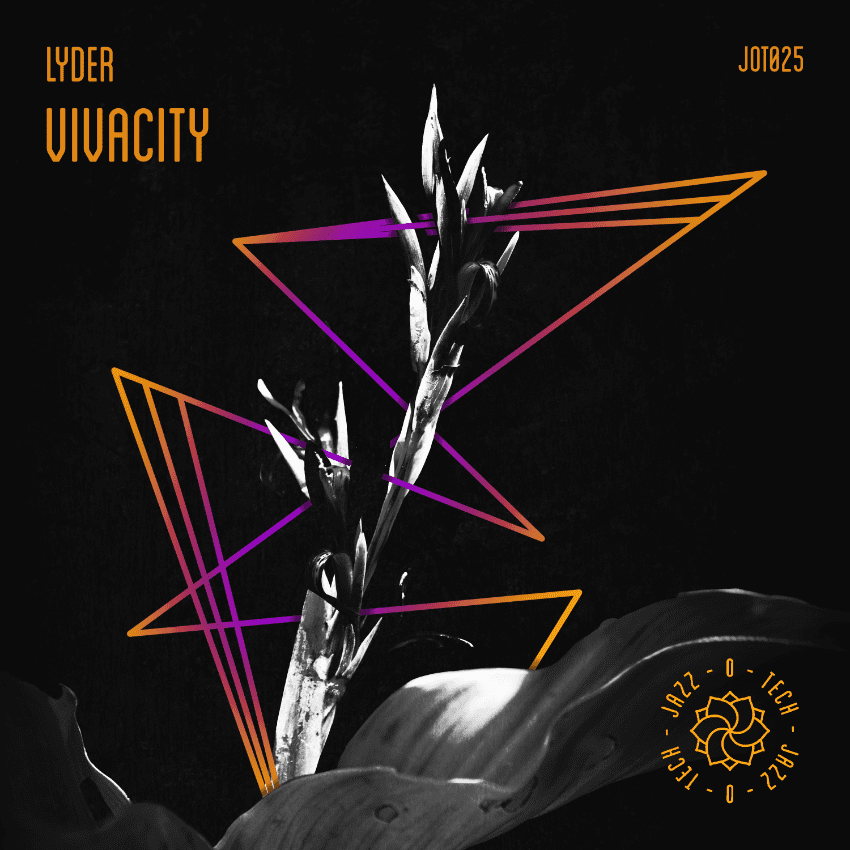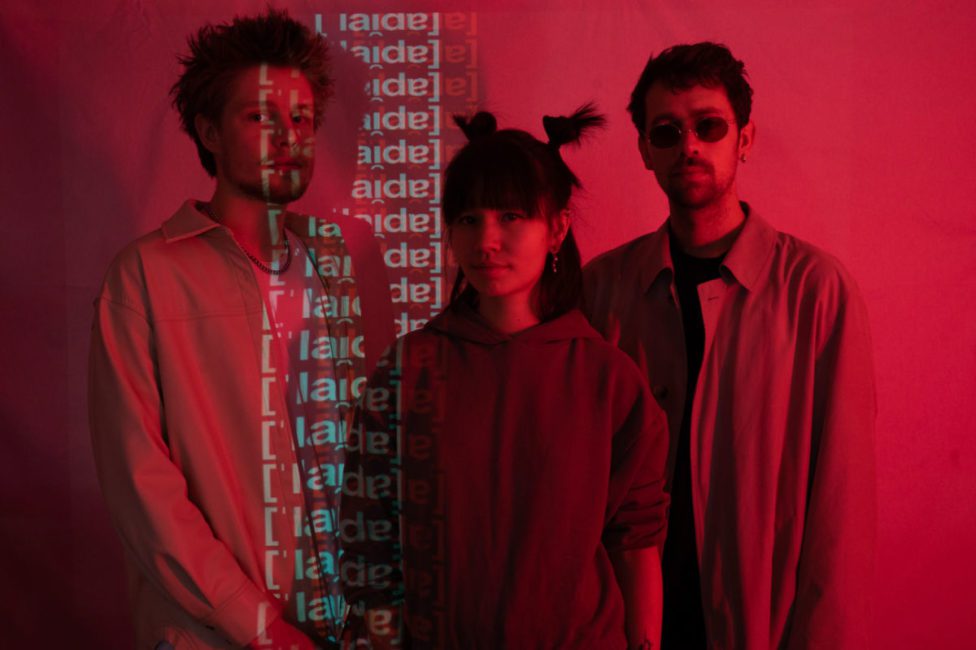In a world where anyone with a laptop can become your next biggest musical fascination, and in which an avalanche of young or relatively inexperienced producers are attaining status in the global music scene with enough hard graft, it’s a continuing interest to see musicians teaming up in new and inventive ways — especially to produce music that they are not already known for.
Lyder is next up in that regard: the Münich trio is comprised of independently established artists, from the deep techno / liquid DnB musics of Lindsey Wang AKA Polygonia, to Niklas Bühler’s Hip-Hop and pedal-board saxophonist Moritz Stahl. The trio land on Jazz-O-Tech, a label that Inverted Audio has reported on recently with regard to their release of electronic/jazz hybridisation from the likes of Finnish duo Aki Himanen and Aleksi Kinnunen.
Lyder’s debut EP, ‘Vivacity‘, is a rare thing that strikes notes for both the electronically averse jazz fanatic and the jazz-averse electronica individuals, fulfilling spiritual jazz needs as equally as it grants beautiful moments of synthesised harmonics.
We spoke with the trio about some of the more unique aspects of their group, and its relatively rare composition: how do “classically trained” musicians approach their solo music-making, the nature of using acoustic or “off-grid” electronic instruments that allow for true flexibility and improvisation, and their stance on the necessity of musical theory in the modern climate of production, where all the “answers” are being thrown at musicians from thousands of YouTube creators.
Alongside this interview, we’re delighted to present a premiere of EP closer and stand-out highlight ‘Helichrysum‘, an ambient dream-walk featuring lilting sung expression by Polygonia, subtle mobile percussion and sun-licked atmospheres.
Interview by Freddie Hudson

"We love to experiment with new ways of playing but also listening to music – being part of many different projects reflects that"
Hello — firstly, congratulations on the EP. It feels very accomplished for a debut. Can you begin by introducing yourselves, and your role within the band?
We are three artists from Munich, who love Jazz and electronic music, but each of us has a different education and skill focus. The thing that we all have in common is that we play acoustic instruments while also being electronic music producers.
Our versatile saxophonist Moritz Stahl, who has one of the coolest pedal boards we’ve encountered, has a jazz background and our pianist plus FX master Niklas Bühler is at home in the genres of Hip-Hop and House. Lindsey Wang, our vocalist and violinist who is creating most of the beats, grew up with a classical music education and is based in the genre of Deep Techno.
We don’t really have that one lead musician since we want to highlight every single member of our band. Every track that we create gives another one of us the chance to express themselves in their own way and give their own touch to that particular piece.
Besides knowing some of your other music personally, it’s very apparent on listening that you have been active musicians outside of this project. Can you talk to us briefly about those projects?
Moritz is part of many Jazz Ensembles (e.g. Ark Noir, Ralph Heidel, Jazzrausch Bigband etc), which are also electroacoustic bands, that explore mixing up both worlds of music. He also started several projects unter the pseudonym “odizouu”, under which he features his works with saxophone and effect pedals and Octatrack.
Lindsey produces and DJ’s deep techno, ambient and downtempo under the pseudonym Polygonia. Her main message is usually to represent natural motifs and thus to raise awareness for the love of nature. Niklas produces Hip-Hop and instrumental music, also with a specific focus on sound-design and special textures and timbres.
We love to experiment with new ways of playing but also listening to music – being part of many different projects reflects that.
Now, onto Lyder. I’d like to start by asking Lindsay about her role in the group, and any sources of inspiration behind the loose, sound-as-word “lyrics” — why did you make the conscious decision to speak without words on the album? What meaning do you think can be said without explicit expression?
I produce the beats, I do a lot of sound design and I also play solo instruments in one or the other track, such as my voice (‘Sea of Thought‘) or the violin (‘Contemplation‘).
I don’t want to tell the listener what emotions they should feel at that moment. I use my vocals more like an instrument and at the same time approach the tradition of scatting. However, I use this technique in my own way and want to combine it with the sound aesthetic of electronic soundscapes. The voice is basically similar to a wind instrument and can take on very different colours and formants through various consonants and vowels.
This conveys the emotion on a meta-level and gives the listener a much wider scope for interpretation. There are already enough pieces with classically sung vocals, I quite enjoy doing this myself as well. But I find it challenging and exciting to have a strong effect on the listener without using words. That’s why I decided to use my voice in this way for this music project as well as my own solo project.
What inspired you all to take the leap into working on the album together as Lyder?
The project was initiated by Lindsey. Before founding the ensemble, she already collaborated with the label Jazz-o-Tech in terms of graphic design and music production for a longer period of time. From the very beginning of the collaboration, both parties intended to release an EP together in the context of this genre fusion.
So, she sought out suitable candidates from her circle of friends in Munich which she knew would fit together well stylistically. In the past, there have been several collaborations between Moritz Stahl’s band Ark Noir, Niklas Bühler and Lindsey Wang. In this respect, it was already clear, based on some good experiences, that the musical vision of all those involved must be a very similar one.
This album marks the beginning of a longer collaboration, which will bring many more releases in the future.
Another content-related topic which made us even more stoked to work on this together was the idea of performing sound-design focused music live in a spontaneous way.
Of course, every live performance has some spontaneity, but with electronic instruments (drum computers, Ableton push, Octatrack etc) it is harder to “really” play live in terms of being able to improvise without prepared drum kits, arrangements, patterns and parts.
The practice of playing acoustic instruments allows the player to decide in a completely different manner and tempo, which makes this way of performing a spontaneous decision much more flexible and faster compared to electronic instruments. That’s why it is really interesting to explore both – acoustic and electronic – realms. Like that, we are able to learn how to make them compatible with each other.

"The biggest lesson we learned was the importance of recording every jam session, no matter how bad we think it is at the moment. Because with some distance, our perspective towards the material changes in a positive way"
With each of you being established musicians in your own right, how was the process of creating the album? Did it flow well, or were there moments when someone wanted a different sound in a given moment, or to lead it somewhere else?
In the beginning, we didn’t even know what our process actually looked like. We just met in the studio and jammed together a bit. The only thing we decided beforehand was the approximate sonic mood we wanted to get into. Then we just started playing for a longer period of time and recorded it all. It was always a lot of fun, but we weren’t quite sure how the material we recorded would turn out in the end.
When we listened to it later with a little bit of distance and set up the projects with all of the elements, it became clear to us that there were a lot of great ideas and the session actually payed off. In this sense, the creative part of making music together was very easy and intuitive. The detail work at the end, where you have to pay attention to so many details in the mixing and arrangement, was of course, as with any other production, relatively time consuming.
However, this does not detract at all from the harmonious collaborative production environment of the entire EP, because in the end, we have discovered that we can actually cooperate very well with each other and that we can come to great results very quickly, despite having only a few meetings.
For each of you, as individuals, what was the biggest lesson that working in this group gave you? What will it help you with in your solo work?
The biggest lesson we learned was the importance of recording every jam session, no matter how bad we think it is at the moment. Because with some distance, our perspective towards the material changes in a positive way. With a little editing it usually becomes very valuable and can form the foundation for a great piece.
I wanted also to ask about the overriding structure of the album. It starts with a light number before switching up into a more beat-driven piece, and on the flip side the same pattern repeats. It seems like a decision aimed at the vinyl product — is this the case, or is a more simple or complex one? How do you think the layout of tracks on an EP or LP makes (or breaks) the record?
At first, we had actually planned a different order, with ‘Frantic Circles‘ and ‘Contemplation‘ changing places on the track list. In the current order, as well as in the alternative version, an emotionally charged track with BPM variation is the welcome.
Secondly, we wanted to create additional dynamics within the EP structure and present our experimental but still melodic ambient piece before the third very energetic track. In both variations of the sequence, the harmonic piece, which in a way conveys a feeling of coming home, comes at the end of the release.
Now, finally, we have decided to change the order to the current one and put our fastest and most energetic track in second place. We wanted it to be clear right from the start, within the first two tracks, that we have a wide stylistic variety to offer and are not afraid to experiment. In this regard, we did not concern ourselves with the usual arrangement of tracks on vinyl products, but we are glad that our variant is even compatible with this.
For me, one of the richer tracks is ‘Frantic Circles’, on which you can clearly hear an influence of electronic club, particularly certain strands of less aggressive techno. I’m curious, how did you draw the line between the Lyder music and the electronic music that you produce separately? Or, is it more of a blurred line at all times?
We don’t have to worry too much about “what fits the project”, because we try to just work together iteratively on the tracks. We play/add stuff we think is cool, then we talk about the results. Everything we add comes directly from the individual cores of our artistic personalities and could have happened in a production of our own, too.
“Lyder’s sound” is then created by our interaction with each other and adapting to things that we approach differently. It’s similar to a jam session. You bring yourself to the jam and play your “own stuff” until other people in the band bring in some of their own ideas or techniques and make you adapt to the new situation. This mix of preference creates a new sound without having to conceptualise it first in a meeting.
Finally, I’d like to ask your thoughts on a broader question: there’s classical or “professional” musical training in your group. Do you think that there is a certain kind of musicality that is fading, as a result of so many producers being self-taught from similar videos and sources? Do you think that established tutelage results in the same tendency toward homogeneic sound?
We are all somewhat professionally trained musicians since childhood and encourage the playing of instruments plus the knowledge of music theory to some extend. It would be a very hard criticism to accuse modern production for being unmusical or “less smart” than for example the Rolling Stones in the ’60s.
In these times it’s easier than ever to pick up electronic music production – more competition means better producers and in the end more quality productions. The only thing that sticks out a bit is that in electronic production some people see music theory as too complicated and time consuming. But in the end it’s a big timesaver.
If you compare the mainstream music of today with the music played in the past, you will definitely notice that in both eras the uniformity of style was always commonplace at the time. In this extent, no decrease in musical quality can be observed, rather the opposite, since the internet nowadays offers a much wider range of possibilities for small artists and niche genres.
Due to the many platforms and the easy accessibility of these, a strong diversification of musical style can be found nowadays and thus a huge variety is available outside the mainstream media. This broadens the cultural knowledge of music and is a big gift to our cultural diversity.
‘Vivacity’ EP is out now via Jazz-O-Tech. Order a copy from Bandcamp.
TRACKLIST
1. Sea Of Thought
2. Frantic Circles
3. Contemplation
4. Helichrysum



